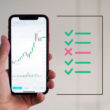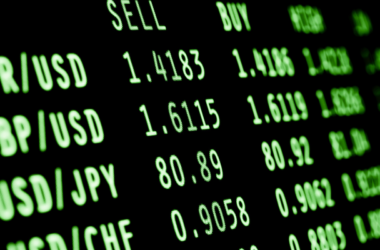“Forex” accounts for foreign exchange which relates to the acquisition or sale of one commodity in trade for another. It’s the most highly traded market across the globe because individuals, companies, and countries all invest in it, and it’s a simple market to enter into without a lot of money. When you’re going on a holiday and exchanging your US dollars for euros, you’re investing in the worldwide foreign exchange market.
At any time, the market for a certain currency would either drive it high or low compared to other currencies. Here are a few specifics about the foreign exchange market so that you really can make the next move and begin trading foreign currencies.
WHAT IS FOREX MARKET?
Foreign exchange (also regarded as forex or FX) alludes to the international over-the-counter business (OTC) where merchants, consumers, corporations and banks swap, speculate, purchase and sell national currencies.
Trading is done on the ‘interbank platform,’ an online system in which instruments are traded 24 hours a day, five days per week. Forex has been one of the biggest money systems, with an estimated annual daily turnover of even more than US$5 trillion.
WHAT ARE CURRENCY PAIRS?
Before you start trading, it’s essential to learn about currency pairs and what they represent.
- On the foreign exchange market, currencies always exchange in pairs. When you swap US dollars for euros, two commodities are included, so the exchange always indicates the worth of one currency compared to the other. The price of EUR/USD, for instance, makes you determine how much US dollars (USD) you need to purchase one euro (EUR).
- The Forex Industry uses marks to distinguish unique currency pairs. The euro is signified by EUR, the US dollar is USD, and the euro/US dollar combination is represented as EUR/USD. Such common currency terms include AUD (Australian dollar), GBP (British pound), CHF (Swiss franc), CAD (Canadian dollar), NZD (New Zealand dollar) and JPY (Japanese yen).
- Each currency exchange pair will be paired with a market value. The price corresponds to how much of the second currency is required to obtain one unit of the first commodity. If the value of the EUR/USD currency pair is 1.7637, this means that it will take 1.7637 US dollars to purchase one euro.
FOREX TRADE KEY TERMINOLOGIES:
1. A SPREAD:
The spread is the differential between the asking price and the bid price. In other terms, it’s the trade expense. For instance, if the Euro to the US dollar is trading at the asking price of 1,0918 and the bid price of 1,0914, the spread will be the asking price minus the bid price. In that case, 0.0004.
On the forex market, currency trading is always worth millions, but minor bid-ask price gaps (i.e., several pips) will quickly add up to large income. Of course, such high quantities of exchange mean that a small spread will often result in major losses. Always trade wisely and take into account the risks associated.
2. A POSITION:
A ‘position’ is the phrase used to refer to an ongoing transaction. A long position means that an investor has purchased a currency that expects its value to rise. Once the seller sells the commodity back into the business (ideally at a better value than he invested for it), his long position is said to be ‘closed’ and the exchange is completed.
A short position applies to an investor that sells a currency who expects its value to fall and aims to purchase it back at a cheaper price. A short position is ‘closed’ until the seller buys back the commodity (ideally for less than he sold it for).
3. A MARGIN:
Margin is the initial money that a trader has to set up in terms of setting up a position. Margin also offers traders the ability to open up a bigger position scale. When selling with a profit, the dealer just has to bring out a fraction of the full value of the position to free up the exchange. Margin opens the door to leveraged investing, however, mindful of it, margin raises both gains and losses.
4. A MAJOR CURRENCY PAIR:
Major currency pairs are the most widely exchanged and contribute about 80 per cent of trading value on the foreign exchange market. Usually, these currency pairs may have low volatility and strong liquidity. They are aligned with secure, well-managed markets, and are far less vulnerable to coercion, and have lower spreads than other combinations.
5. A CROSS CURRENCY PAIR:
Cross-currency pairs – crosses – are non-USD pairs. Traditionally, Crosses were initially translated into USD and then through the regional economies, but are now sold for direct trade. The most widely exchanged are extracted from Minor two currencies (e.g., EUR/GBP, EUR/JPY, GBP/JPY), which are usually less liquid and more unstable than Major currency pairs.
6. AN EXOTIC CURRENCY PAIR:
Exotics are commodities from developing or smaller markets, combined with the Major. Especially in comparison to Crosses and Majors, Exotics are far more likely to sell because they are less liquid, more unpredictable and more vulnerable to exploitation. They also include larger spreads and are more susceptible to abrupt fluctuations in political and economic trends.
7. A CANDLESTICK CHART:
A candlestick is a graph, also identified as the Japanese Candlestick Chart, often chosen by investors due to the broad variety of details it offers. The pattern shows the high, low, opening and closing values.
There are three attributes in the candlestick: open, close, and the wicks. The wicks demonstrate a high to low spectrum and the ‘real body’ (broad section) tells shareholders whether the closing price was greater or lesser than the initial value. If the candlestick is loaded, the currency pair closed lesser than it opened. If the candlestick is hollow, the closing price is greater than the opening price.
8. A BAR CHART:
The bar chart displays the opening, close, high and low prices of the financial instrument. The peak of the bar is the highest paying price and the bottom is the lowest exchanged price for the same time frame.
The real bar indicates the total exchange range of the currency pair and the horizontal bars on the sides reflect the opening (left) and closing rates (right). The bar graph is most widely used to describe the reduction and extension of price points.
9. A LINE CHART:
A line map is simple to grasp for beginners to exchange forex. A line is traced from one closing price to the other in a line map. When linked, it is simple to explain the general price action of a currency pair over some time and to evaluate currency trends.
10. A PIP:
Many currency pairs will switch between 50 to 100 pips a day, either more or less based on the overall economic environment. A pip is a term used to denote the fourth decimal position in the currency pair, or the second decimal place while the JPY is in the pair. Whenever the value of EUR/USD shifts from 1,3600 to 1,3700, that was a 100-pip transition; if you purchased the pair at 1,3600 and offered it at 1,3700, you’d earn a 100-pip profit.
For trading considerations, the first currency mentioned in the pair is always the forward commodity on the forex price table. If the price increases to EUR/USD, it means that the euro goes higher than the US dollar. If the price on the map decreases, the euro will sink compared to the dollar.
HOW TO START TRADING ON FOREX EXCHANGE MARKET:
A broker shall serve as an agent between traders and liquidity providers. It enables the implementation of customer requests. It is advised that you select a registered, supervised broker with at least 5 years of established experience. If the broker complies with the regulatory rules, you may well be confident that they are genuine.
Once you have an account set up, you may trade—but you would be forced to make a payment to cover the expense of your business. It’s called a margin account. That being said, it is very important to note that being a successful trader is not an instantaneous process. It takes time to get to know the markets, and there’s a whole different language to understand. For this cause, trustworthy brokers are offering a trial account. This is a perfect way to play with various trading techniques – all with electronic capital and no threat!
CONCLUSION:
As you’ve heard, there are several technical words and phrases in Forex dealing. As investors, we must always read, study, and expand on our current experience to make us a more well-rounded dealer be more successful. The dumbest issue is the one that has never been posed. So next time you sign in to a trading platform and see any words you don’t know, inquire, investigate, figure out! Forex trading can be a complicated subject to conquer, but with the right resources and training, we will continue to evolve as traders.










